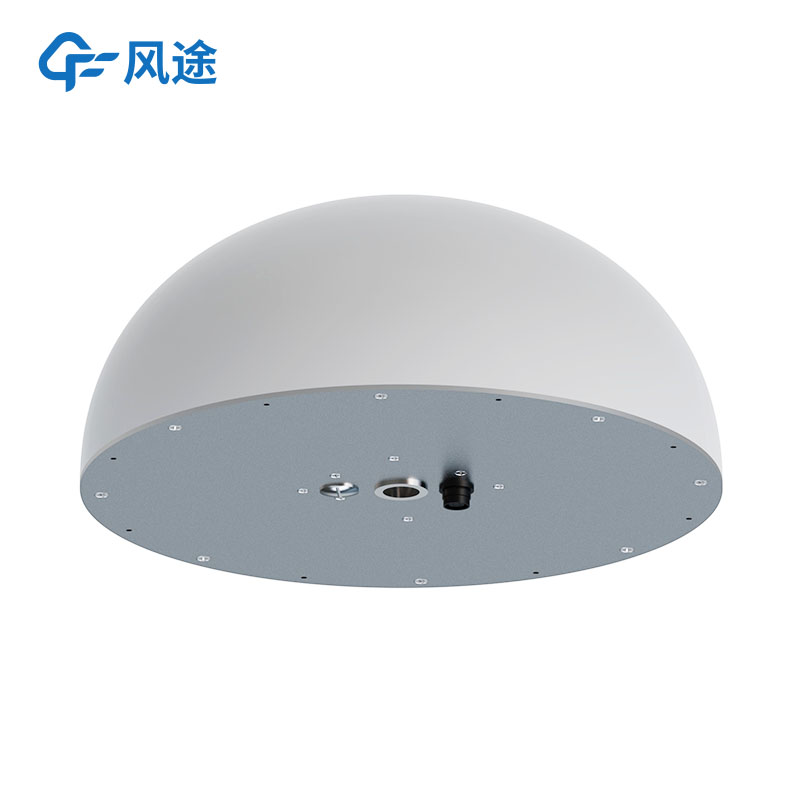Tianyi Sensor IOT Technology Co., Ltd
Sales Manager:Ms. Emily Wang
Cel,Whatsapp,Wechat:+86 15898932201
Email:info@fengtutec.com
Add:No. 155 Optoelectronic Industry Accelerator, Gaoxin District, Weifang, Shandong, China

Sales Manager:Ms. Emily Wang
Cel,Whatsapp,Wechat:+86 15898932201
Email:info@fengtutec.com
Add:No. 155 Optoelectronic Industry Accelerator, Gaoxin District, Weifang, Shandong, China
time:2025-11-10 09:10:49 source:Weather Station viewed:4 time
Global Navigation Satellite System (GNSS) is an autonomous, worldwide space-based positioning system. These systems continuously broadcast radio navigation signals to the ground through satellite constellations, providing users with positioning, navigation, and timing services.
01 GNSS Technical Principles
GNSS positioning is based on the principle of trilateration: the receiver calculates its distance from the satellites by measuring the signal transmission time from multiple satellites. To determine the user's three-dimensional position and clock offset, signals from at least four satellites must be received simultaneously.
GNSS signals consist of three basic components: navigation data, pseudorandom noise (PRN) code, and radio frequency carrier. The receiver uses these signals to measure pseudorange and achieves higher-precision positioning through carrier phase measurements.
The main error sources affecting GNSS accuracy include:
Satellite-related errors: clock bias and orbital errors
Atmospheric delays: ionospheric and tropospheric delay effects on signals
Receiver errors: internal clock bias and hardware defects
Through differential positioning techniques such as Real-Time Kinematic (RTK), these errors can be significantly eliminated, improving positioning accuracy from the meter level to the centimeter or even millimeter level.
02 Features and Applications of Fengtu® GNSS Receivers
Fengtu® GNSS Receivers are highly integrated, all-in-one devices that combine a GNSS module, sensor module, and wireless transmission module. The device supports multi-system, multi-frequency signal reception, including the four major global navigation systems: BeiDou, GPS, GLONASS, and Galileo.
Technical Parameters:
Static accuracy: horizontal ±2.5mm ±1ppm, vertical ±5mm ±1ppm
Designed with a choke ring antenna to effectively suppress multipath effects
Power consumption below 2W, suitable for long-term field monitoring
Supports multiple communication methods: 4G/NB-IoT, LORA radio, etc.
Built-in tilt sensor to detect the tilt state of the carrier
Application Areas:
Fengtu® GNSS Receivers are specifically designed for geological hazard monitoring and are widely used in displacement monitoring for field landslides, collapses, mining-related geological hazards, reservoir dams, and highway slopes. The device can accurately monitor minute displacement changes of target objects in complex environments, providing strong support for engineering safety.
With its high-precision positioning technology and real-time data transmission capabilities, the receiver achieves millimeter-level displacement monitoring, offering users reliable safety warnings and data analysis support.

Scenic areas pay particular attention to negative oxygen ions because the concentration of negative oxygen ions is an important indicator for measuring the quality of air and the ecological environment. Negative oxygen ions have the functions of purifying the air, improving cardiopulmonary function,...
The traditional meteorological monitoring stations have limited distribution, making it difficult to comprehensively and real-timely grasp the complex and changeable meteorological conditions. However, combining drones with meteorological instruments has unexpectedly become a solution to make up for...
In the field of wind power generation, accurate measurement of wind speed and direction is essential for wind farm site selection, wind turbine power characteristic research, and generator set power control.Traditional mechanical anemometers suffer from issues such as wear and aging of moving parts,...
The operation of air quality monitoring stations relies on a comprehensive grid-based environmental supervision system. This system takes towns, communities (and villages) in cities as basic units, and divides them into air pollution prevention and control management grids according to different lev...